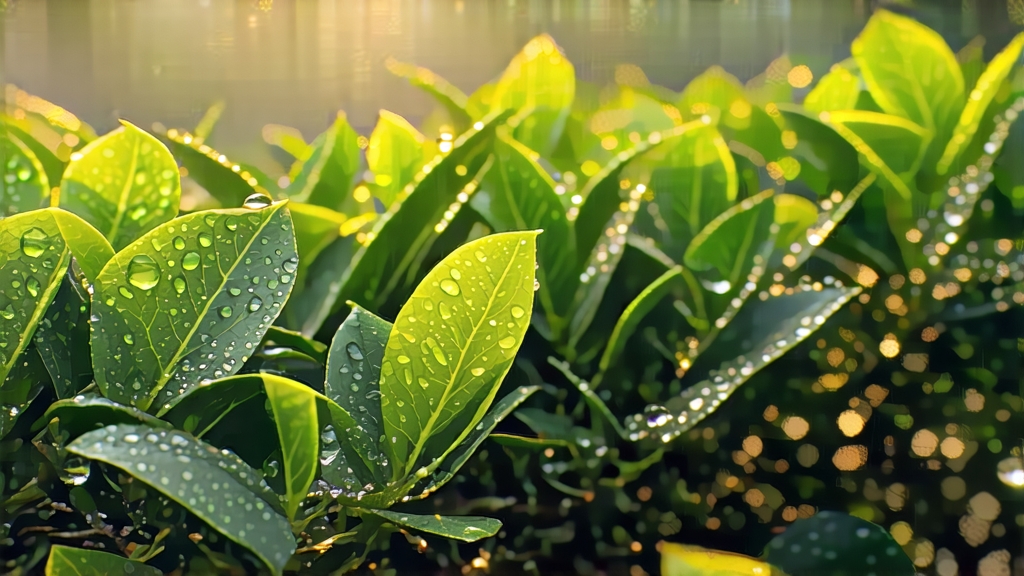
Alishan High-Mountain Oolong is not merely a tea; it is a sip of Taiwan’s sky. Grown between 1,000 and 1,400 metres in the Alishan Range of Chiayi County, this cultivar belongs to the broader Qing Xin (Green Heart) oolong family, yet it expresses a personality shaped by altitude, mist, and the patience of its makers. International drinkers often meet it first through its lyrical Chinese name, “Alishan Gaoshan Oolong,” but the real conversation begins once the leaves hit hot water and release aromas that oscillate between white orchid, fresh cream, and mountain air after rain.
History
Oolong technology migrated from Fujian’s Wuyi Mountains to Taiwan during the mid-19th century, yet Alishan itself remained a forest reserve until the 1970s. When the Taiwanese government relaxed high-elevation land use, tea farmers from the foothills climbed skyward, carrying Qing Xin cuttings and charcoal-firing skills. They discovered that the combination of cooler nights, ultraviolet-rich days, and well-drained, slightly acidic laterite produced leaves so fragrant that even a light oxidation could yield complexity rivalling the heavily roasted Wuyi rock teas. By the 1990s Alishan oolong had become the flagship of Taiwan’s “high-mountain” (gaoshan) movement, a style that privileges floral clarity over roast, terroir over technique.
Terroir & Harvest Calendar
Alishan is not a single peak but a 20-kilometre ridge system where bamboo and cedar give way to tea gardens that seem to float above the clouds. Diurnal temperature swings of 15 °C slow leaf growth, concentrating amino acids and volatiles. The spring harvest, picked from late March to early May after the season’s first persistent fog, delivers the most nuanced cup: silky, cooling, with a finish that echoes alpine herbs. Winter harvest, taken in mid-October when nights drop to 10 °C, offers a thicker texture and ripe-peach sweetness. Summer and autumn pluckings exist, yet connoisseurs prize the “two seasons of mist” above all.
Cultivar Specifics
While Qing Xin remains the dominant bush, micro-clones such as “Soft Stem” (Ruan Zhi) and “Golden Lily” (Jin Xuan) have been trialled at 1,200 m. Only Qing Xin, however, achieves the signature “lingering coolness” (gan) that Alishan lovers chase. The plant’s small, serrated leaves develop a jade waxiness at altitude, a natural sunscreen that translates into a glossy, needle-shaped finished tea.
Crafting the Leaf
Plucking begins at dawn when dew still weighs down the two-leaves-and-a-bud sets. Once baskets reach the mountain-top factory, leaves are solar-withered for 20 minutes on large bamboo trays, just long enough to lose 3 % moisture and acquire a grassy sweetness. Indoor withering follows: 6–8 hours of gentle tossing on rattan racks every 30 minutes, coaxing the edges to oxidise while the leaf core stays green. The moment the bruised rims emit a pineapple-banana perfume, oxidation is halted with a 200 °C tumble in a gas-fired drum. Here the “kill-green” (shaqing) phase is shorter than for lower-grown oolongs, preserving higher levels of linalool and geraniol. Rolling comes next, first in cloth-wrapped balls that are compression-tumbled for 3 minutes, then loosened, re-wrapped, and tumbled again—up to 25 cycles—until each leaf is twisted into a tiny jade snail. Finally, the tea is dried at 80 °C for 90 minutes, reducing moisture to 3 % and locking in the bright, pastel aroma that defines the style.
To Roast or Not to Roast
Traditional Alishan is only lightly baked: 60 °C charcoal embers for 2–3 hours, just enough to round off grassy edges. A newer fashion, “original fragrance” (yuan xiang), skips roasting entirely, presenting the tea in its most pristine, floral state. Roasted versions, labeled “soft charcoal” (wen huo), age gracefully for 3–5 years, developing honeyed bass notes without obscuring high-register florals.
Grading & Nomenclature
Within Taiwan the term “Alishan” is protected; leaves must be grown above 1,000 m in Chiayi and processed locally. Export grades are simpler: Special, Superior, and